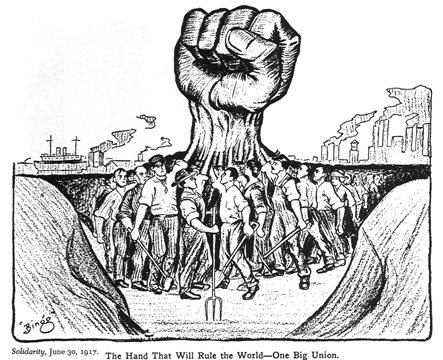
August 27, 2013;Daily Californian and Tennessean
Two different labor management stories in two very different parts of the U.S. illustrate the continuing common labor difficulties faced by America’s nonprofits, many of which employ unionized workers in rank-and-file positions.
In the San Francisco Bay Area—a bedrock of labor power—disagreements over wage increases have caused a rift between a prominent Berkeley nonprofit and its unionized workers, halting negotiations for a new contract. According to the Daily Californian, the U.C. Berkeley student newspaper, negotiations for a new contract between the California Professional Employees union and its employer, Building Opportunities for Self-Sufficiency (BOSS), a nonprofit that provides food and shelter to clients who are homeless or have mental disabilities, reached an impasse when the nonprofit denied its employees the two-percent pay raise they demanded.
BOSS’s new executive director said that his $5 million-a-year organization would be driven to bankruptcy if it granted the raise demanded by the union. He said that the organization offers competitive wages and compensates its employees better than other nonprofit organizations in the Bay Area. “They’re asking me to increase the deficit, and I’m just not willing to do that. BOSS is not equipped to do that. Shame on them for asking the impossible.”
BOSS’s employees have not received a raise since 2006, according to a business representative for the union, who said that so far, the organization has only agreed to give its workers an extra day off each year. “We’re very disappointed with the way BOSS handles these things. We’re asking for a minimal cost-of-living raise.”
The Daily Californian reported that in recent years, the organization’s financial difficulties have contributed significantly to the current standoff. A 2003 Berkeley City Council document shows that the organization accrued hundreds of thousands of dollars in debt to the U.S. Department of Housing and Urban Development, as well as to other institutions. The agency’s former executive director said that the current labor impasse was unprecedented.
Sign up for our free newsletters
Subscribe to NPQ's newsletters to have our top stories delivered directly to your inbox.
By signing up, you agree to our privacy policy and terms of use, and to receive messages from NPQ and our partners.
Meanwhile, in a city known more for its country music than the classics, the labor picture is more tranquil. Musicians with the Nashville Symphony agreed to 15 percent pay cuts as part of a one-year deal with the Nashville Symphony Association. The Tennessean newspaper reported a deal that takes effect immediately, adding that the musicians’ pay cuts are in line with recent cuts taken by the orchestra’s top leadership, including its managing and music directors.
The symphony only recently averted a threatened foreclosure on its home, the Schermerhorn Symphony Center, by using liquid assets and help from a prominent wealthy donor. This agreement comes after three months of negotiations, which the orchestra’s leadership acknowledged was a sacrifice on the part of the musicians and a stop-gap measure. “We were able to reach these mutually agreeable terms through a genuinely collaborative effort and a common desire to serve the people of Middle Tennessee.”
The newspaper said that the salary concessions are part of a comprehensive financial restructuring that the Symphony has undertaken in response to difficult economic conditions and the recent floods, cutting nearly 30 percent of this year’s operating budget. The Symphony’s goal is to restore salaries when it gets back on its feet. It begins its new season soon after Labor Day.
These two Labor Day stories demonstrate that nonprofits are not immune from the same labor-management pressures facing for-profit companies in an economy emerging from the Great Recession and a labor market confronting tectonic structural changes. As in the for-profit sector, the majority of nonprofit employees are not unionized, and the dynamics of labor-management relations is as varied as the sector, often reflecting regional and industry-specific differences, as well as the personalities of the organizations’ leadership.
Nonprofits and labor unions (which, by the way, are technically nonprofits themselves) have faced off before over such issues as the use of unpaid labor—as in good, old-fashioned volunteers—and how the increased use of volunteers, usually considered a positive thing in the nonprofit world, might cost salaried workers their jobs and lead to increased unemployment.
In other cases, public employee unions often find themselves opposing the outsourcing of government services in the form of contracts with nonprofit service providers because it can cost their memberships their jobs. In this economy, governments are turning more and more toward nonprofits to provide traditional services at a lower cost than can be provided by public employees, sometimes because nonprofit employees are paid less and receive fewer fringe benefits.
It’s a continuation of the long-standing debate over the true societal cost of achieving program efficiencies, and yet another example of how organizations pledged to improve the lives of people in our society often find themselves at odds over the means to that worthy end.—Larry Kaplan













